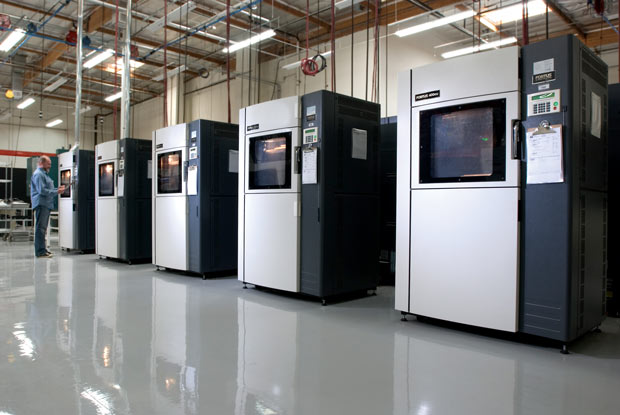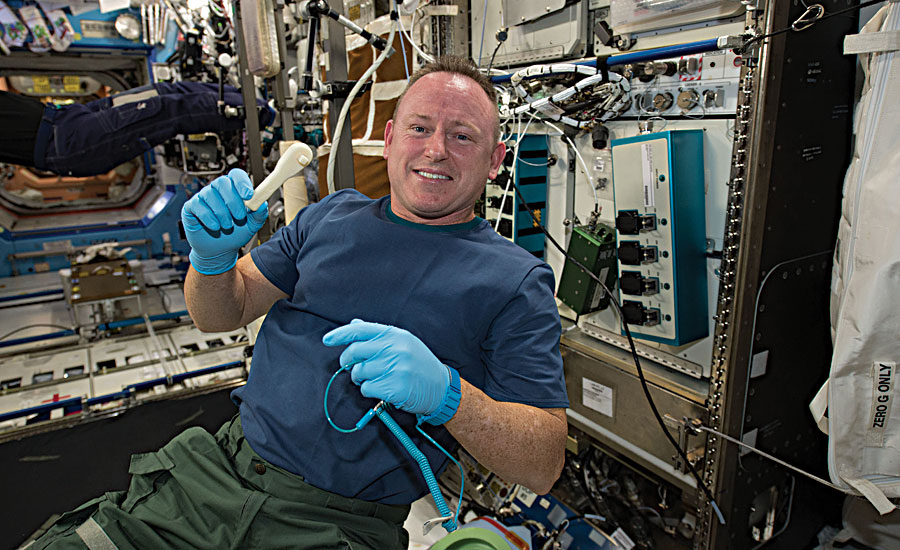
Rising above the clouds of uncertainty
09/11/2017
The contribution of Additive Manufacturing to Sustainability: conclusions
29/11/2017By Greta D’Angelo, PhD and Federico Fioretto
PART II: (second of three articles)
[Introduction and summary of PART I]
In the previous part we have discussed Sustainability benefits in Additive Manufacturing (AM), more commonly known as 3D printing, given by the product itself, starting from a different design of it, and the peculiar production process of AM. In this second part of our article we will discuss the benefits of the make-to-order component manufacturing model that AM fosters and the impact that the technology will have on logistics and the whole supply chain. Finally we will discuss the necessity of rethinking the business models. Although the different aspects will be discussed individually within the article and one at the time, it is important to see them as intertwined factors that go hand in hand. As the way of designing and producing products changes, so is the way they are transported and delivered. In this context, the major contribution of AM is that of decentralizing production and bringing it closer to consumers. Since supply management plays an important role within the company’s performance it is paramount for any type of businesses to understand how logistics and supply chain networks will develop in the near future.
[Discussion]
- The supply chain: from product to delivery:
- A supply chain is a sequence of steps involved in the production and distribution of a certain good and it possesses different levels of operations. At each of these levels AM has the power to “remodel” the chain, affecting it in various ways and at different stages, e.g. from the most detailed aspect of CAD model within a product design to logistical decisions. AM offers the chance to make operations more flexible not only in terms of what type of products can be manufactured but also of where the manufacturing takes place, by bringing the production closer to the market of interest through decentralization. This will consequently shorten the supply chain, with immediate benefits from reduction of inventories and shortening of lead times, besides the reduction of the environmental footprint of manufacturing, saving transportation impact and risks, which have also to be considered in the whole picture.
- Decentralization creates then an ideal scenario where products are manufactured on-site. This leads to a very interesting improvement in the economic and environmental performance in different industries, e.g. the construction Initial experiences have shown that it is possible to produce goods/objects on-site with basic and locally procured materials when using AM instead of long distance semi-finished components, complex high-value materials or whole parts. With this, not only the local economy and environment would benefit, but many of the shipments and unnecessary international transportations would be avoided with a positive environmental impact as a consequence.
- Another field where AM will play a significant role is the reduction of replacement – spare parts inventory (already mentioned in 1.2). We know that the more sustainable energy and material are those that are not used. Therefore the fact of reducing redundant inventory of parts – meaning for less manufacturing and delivery of goods – makes for a net positive environmental impact. Indeed, only what is actually needed is fabricated at the moment of demand, with just the necessary use of matter and energy. The reduction of inventory, time and precision of production can then be put on the side of cost saving/increased profit. In the same context AM is also ideal for repairing broken parts in specific isolated or distant locations, e.g. in the Marine or Aerospace When something breaks on a big vessel located in open water, let alone a Space Station, there is a very long waiting time if a spare part is not stored. By bringing a 3D printer on board, this problem can be overcome.
- Using AM for digital production, and therefore storing 3D models of items rather than the physical objects themselves, increases the information flow while the material flows decrease: designs in form of digital files would move around the globe to be printed in the local market by any 3D printer that meets the design specifications. The same way that internet eliminated the distance in information flow, the AM will reduce the material flows: distribution centers will store products’ blueprint and design files on their farms or in “the cloud” rather than storing the physical items. Again there is a possible positive impact from reduced transport impact and cost, besides the required storage space, which would be much less.
- There is a weak side, though, on benefiting fully from point 1.4 and this is the still insufficient availability of adequate libraries of digital designs fit to feed AM systems with the right data. The establishments of a tight network of certified 3D printing hubs where it is possible to have local production is also something that needs to be fully implemented in the new model of on-demand production of spare parts and replacements. New and specialized web based platforms may be needed. Issues on intellectual property and IT security need to be also dealt with, but this is not object of this paper.
- New business models
- It seems that AM will impact the manufacturing industry in many ways. As well as with every revolutionary change many thoughts, processes and structures taken for granted in earlier stages shall be discusses and most likely thoroughly changed. Manufacturing shall go through a process that literature appropriately calls “democratization of production”. Such process will lead to a more consumer-centric industrial model, where customers shall be empowered to “print” their own goods.
- As a consequence of what we discussed in point 1.4 and 1.5, business will rather focus on production and marketing of designs instead of physical products. This requires the adaptation of some industries, in order to increase the users’ involvement at an earlier stage in the process and respond to higher expectations of customer experience. It is also a matter of dematerializing industries, switching them from goods manufacturers to service providers, which is a trend that many businesses are facing already. Dematerialization and the switch to service providing are already having positive environmental, and economic, impacts for some frontrunners of Sustainability. The easiest and lowest-hanging fruit of such change is that it facilitates the process of recycling materials and it closes the loop of production cycles.
- The aforementioned changes bring social implications Competition will become more centered on intelligence and creativity, i.e. on the quality of education and culture of a society, than on cheap labor and denial of human or environmental rights. The more innovative people will have a lead and the relevance of available capital will decrease, giving more widespread opportunities as it has been, partly, with the digital economy. On the other hand, the fact of shifting the production from the “hard” to the “soft” side of making will enable people in remote areas with just a good Internet connection to compete on the global market of engineering and design, likewise it is already happening with graphics, software and website design on platforms like Freelancer.
- Logistics will be highly impacted by AM technology. For starters: what about the huge surfaces of agricultural land that have been given up in the last decade to warehouses and storage? AM makes for much less needs of all this, not talking of all the packaging needed to ship finished products which is not at all comparable to shipping the raw materials to an AM manufacturing service. All these changes may sound very “sci-fi” but this world may actually not be that far. Think about this fact: Amazon is developing trucks that use AM to produce the goods along their way to the customer, getting the order directly via wireless technology. This, in our opinion, is a strong signal. The change in business models can be impressive, with a positive impact on the environmental footprint of manufacturing.
- One risk from a Sustainability point of view, could be a surge of consumerism, due to the increased opportunities to produce “more stuff” at any level. Therefore, there is a need for more research in the development of AM solutions that enable the re-usability of matter and the use of bio-based, recyclable or compostable Along this, there is a necessity from the industry to develop a strategy to incorporate these practices in their current businesses and to change and adapt their business models to the needs of our times.
- A new industry for the production of AM systems and design tools for 3D printers will come to market too, as well as platforms for sharing designs, transforming simple 3D designs into appropriate files for the AM manufacturing process and other useful services with added value to help experienced users and beginners. This development will create business opportunities, of course, and since current investment trends incline towards Sustainability sensitive initiatives we can assume that what starts anew can be helped develop in that direction.
- The latter hints of course at more opportunities to contribute to small scale, widespread, democratic, renewable energy powered production that in itself brings in all the three benefits of sustainability: environmental stewardship, shared social value and generation of economic prosperity.
So much for the second part of our reflections on the correlation between AM and Sustainability. In a third, short article we will draw the conclusions from all of the above points and we hope that a lively debate in the issue will start after that.
Greta D’Angelo is an industrial designer converted to the discipline of manufacturing engineering. She has a PhD in Additive Manufacturing from the Technology University of Denmark and has collaborated with numerous designers and universities, among which MIT and ETH Zürich. Greta is now a consultant in the area of Digitalization and Additive Manufacturing for the development of sustainable business models.

